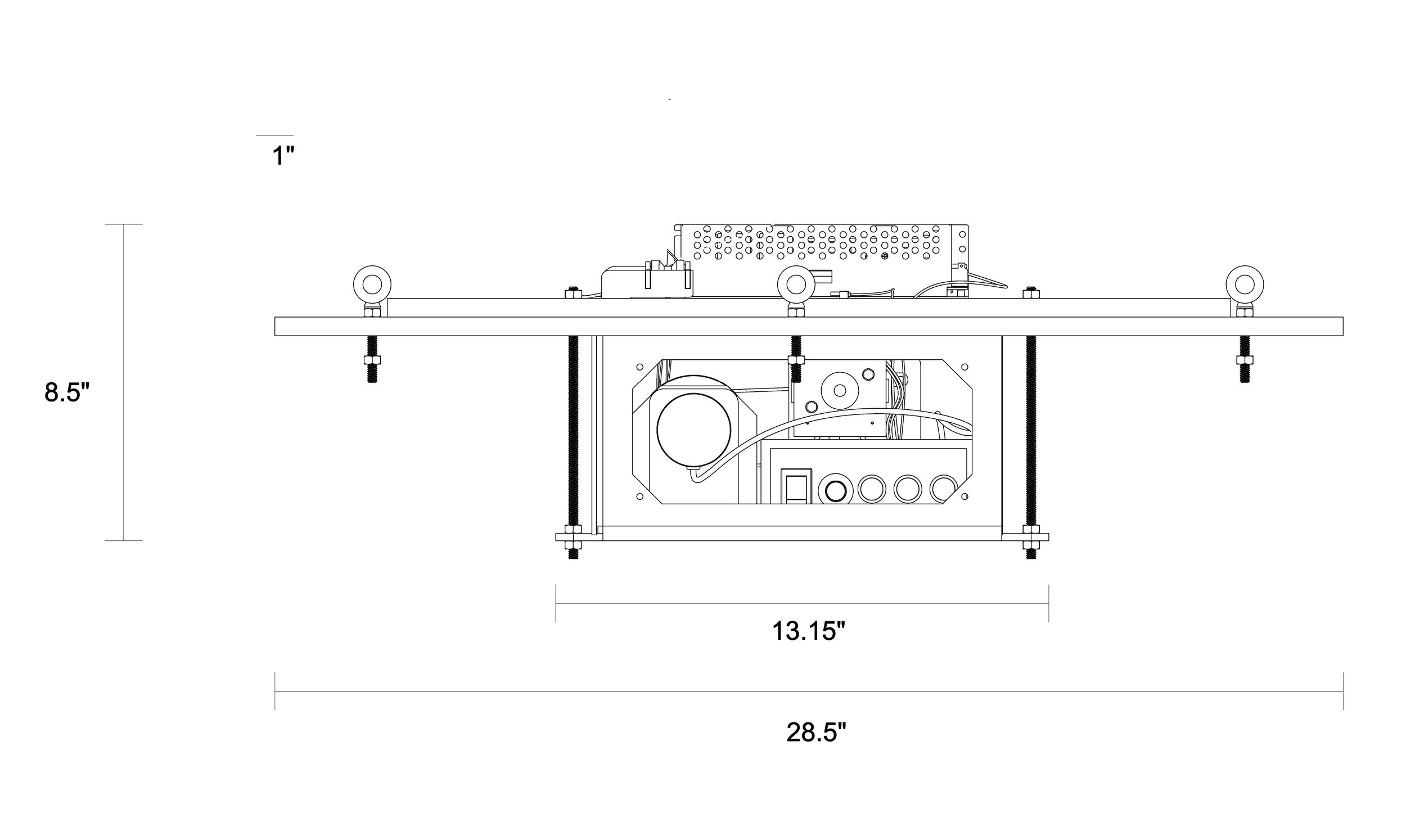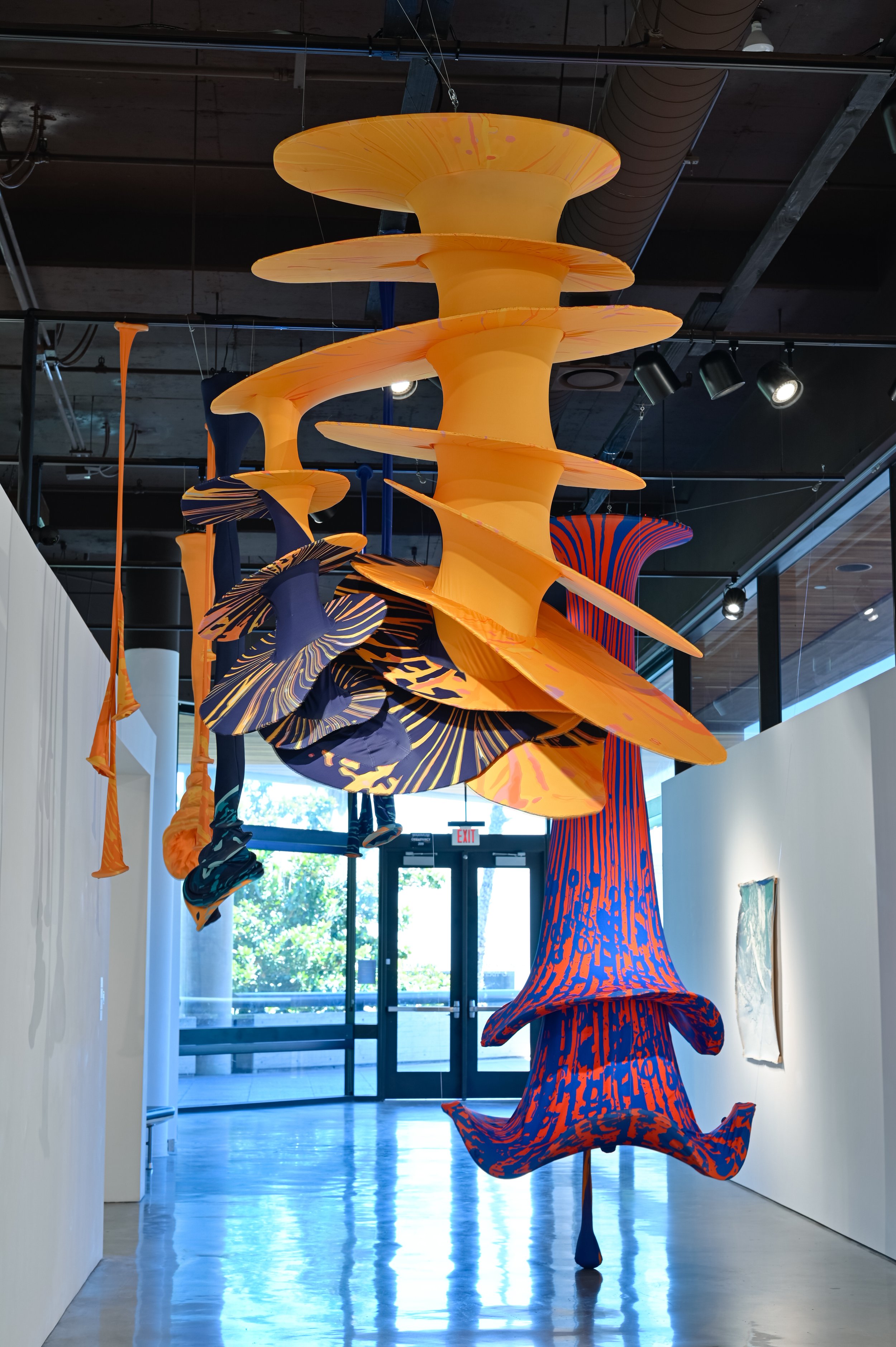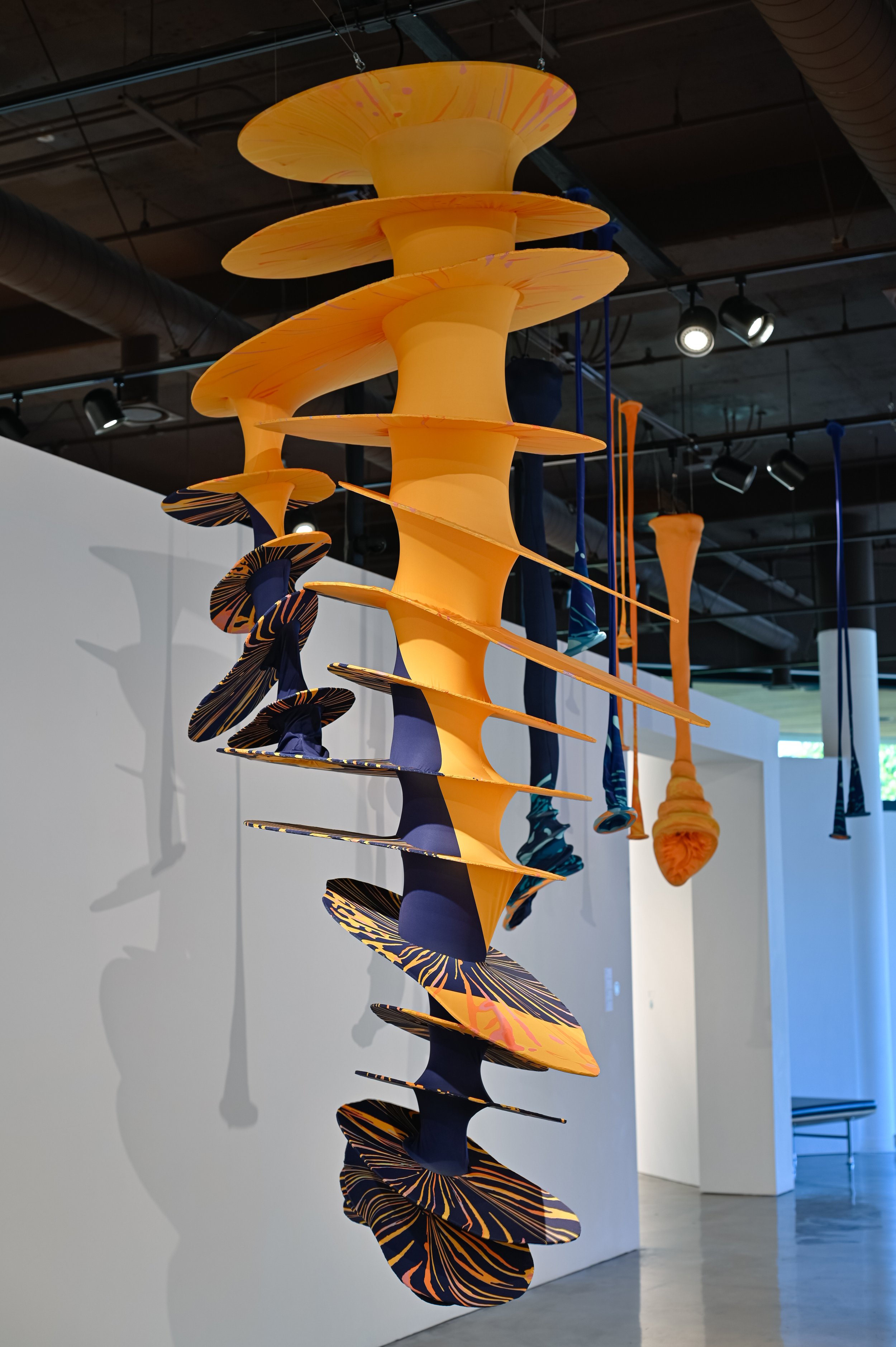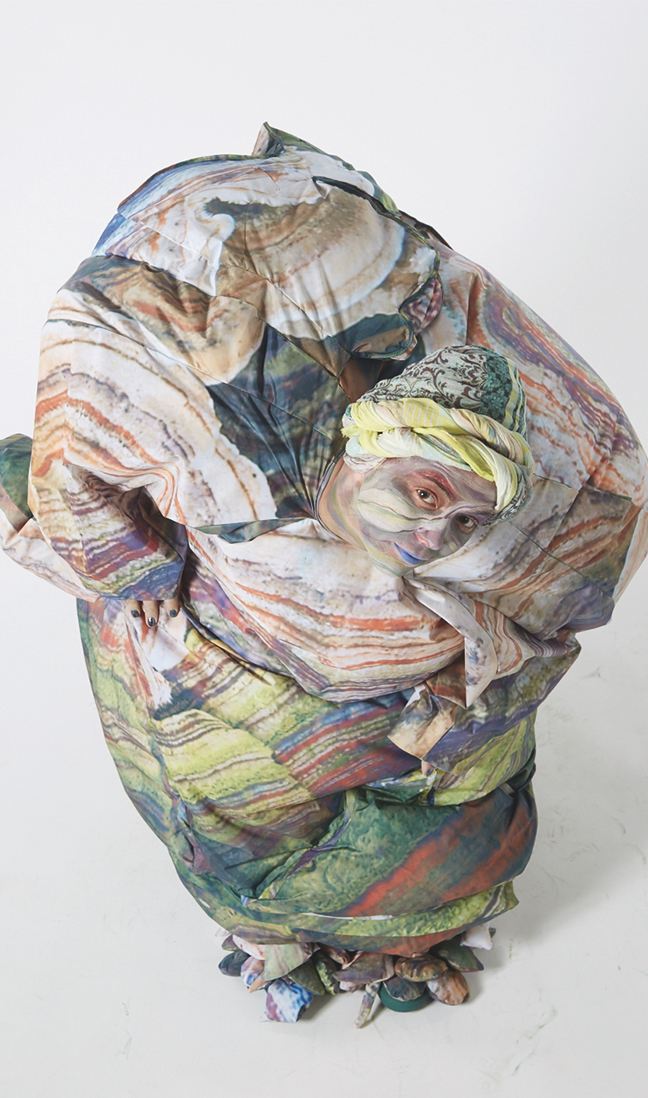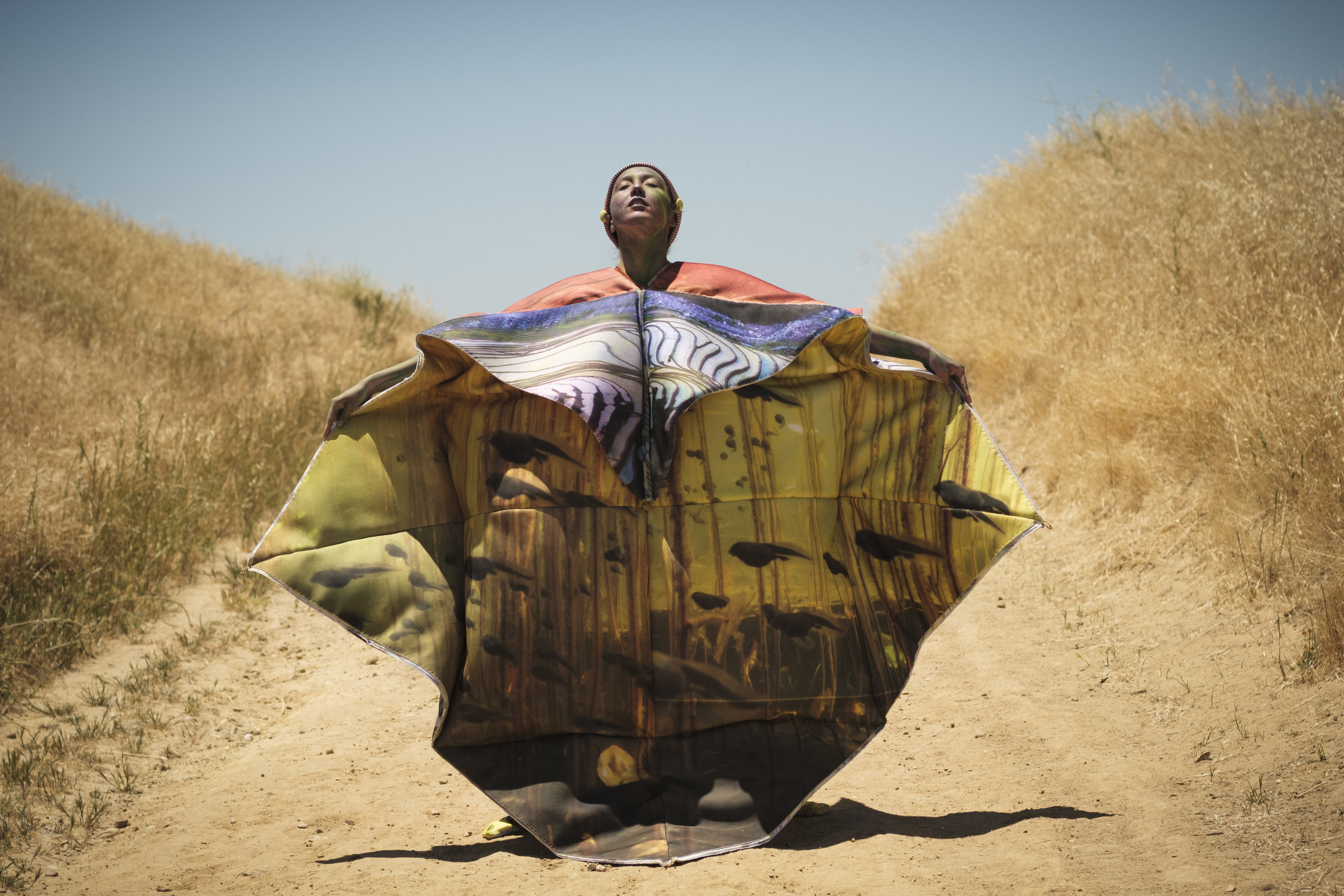Through my work, I investigate humans' interactions with their surroundings and the non-human. I strive to challenge the influence exerted by human-made systems, such as society, culture, and architecture, on our perception of the non-human. I research the neurological and psychological effects of our interactions with them through soft robotics and other new technologies while considering the impact of our societal and cultural backgrounds on our perception. Additionally, I experiment with ideas on how to alter these interactions for a more symbiotic relationship. Ultimately, my objective is to encourage deep reflection on these intricate relationships and the potential consequences they may hold for the future.
SYMPATHETIC MOTION SERIES
Kinetic sculpture Series. Includes the pieces: Thirsty for air, Making room, Waiting for the Dark and Searching for the Sun
-
The Sympathetic Motion series comprises four large-scale soft kinetic sculptures: Waiting for the Dark, Searching for the Sun, Thirsty for Air, and Making Room. The series derives its name from the musical term “Sympathetic resonance,” which refers to the harmonic phenomenon where a passive string or vibratory body responds to external vibrations that share a harmonic likeness. Similarly, the motion in these sculptures becomes unpredictable due to the interaction between their mechanical components, fabricated structures inside, and the fabric itself. The series aims to explore how people’s reactions to moving objects change depending on different design qualities, movements, and preconceptions derived from culture, society, and the past. The design choices were made to tap into humans’ desire to anthropomorphize moving objects and provide an opportunity to interact with something non-human and non-identifiable. The series also raises questions about the nature of interactions with these entities brought to life by technology and whether such interactions can impact human relationships with non-human beings in the real world. goes here
MAKING ROOM
Kinetic Sculpture.
Materials: Fabric, wood, electronics, air.
Size: 5ft x 3ft x 3ft
click on the images to englarge
THIRSTY FOR AIR
Kinetic Sculpture.
Materials: Fabric, wood, electronics, air.
Size: 5ft x 3ft x 3ft
click on the images to englarge
WAITING FOR THE DARK
Kinetic Sculpture.
Materials: Fabric, wood, electronics, petg.
Size: 12ft x 6ft x 6ft
SEARCHING FOR THE SUN
Kinetic Sculpture.
Materials: Fabric, wood, electronics, pla.
Size: 5ft x 3ft x 3ft
RAISING QUILLS
Kinetic sculpture. Materials: fabric, wood, electronics, pla. Size: 9ft x 4ftx 4ft.
I stretch above and below to connect the ends in a new way. They’re a part of me and I of them. I hold out my quills to extend my home. If you and I should share a touch, I would show you the spaces between. I move on my own, not with the wind, not towards the sun, nor do I need water. I contain all within myself. You decide who I am, what I am, where I am from.
ISLAND OF DOUBT
Kinetic installation. Materials: fabric, wood, electronics, pla. Size: 13ft x 13ft x12 ft.
-
The little cars Wally, Dory, Mortimer, Ferguson, and Baxter move back and forth in different combinations on the wood-curvy tracks. They report their location to the brain of the system that functions as a communication line between all of them. The brain remembers and communicates the position of each sculpture to the other that is in proximity. For instance, when Wally and Dory are the farthest from each other they might realize they miss each other and therefore go into a certain state of behavior that reflects their sadness while if they are closest to each other they might mingle. Once every so often, they move together or towards each other. The tracks never cross so the sculptures can never touch each other unless they are already tangled together, coupled, from the beginning.
When the visitors walk they first see the movement of the fabric sculptures and then realize the tracks. All of the electronics in the ceiling are somewhat hidden because the tracks are designed to blend into the architecture and become an appendage to it. The very complicated system on the ceiling is reflected by not so complicated movements at eye-level. While the tracks blend into the architecture, the vertical sculptures jump out and drool onto the floor as if they are reaching for the audience. The piece facilitates a physical relationship between the architecture and the residents in it.
As the visitors enter the installation and walk through it, they have to change their behavior in the space according to the sculptures or interrupt the system. They may choose to interrupt the system by pushing the pieces out of their way, pulling them or just holding them. This physical interruption by the audience interrupts the relationships within the system. Every time the audience chooses to hold one of the sculptures a second more than the sculpture is supposed to stay in that place, the counter in the brain that remembers and reports where the sculptures are or what they are supposed to do next gets interrupted and confused. As a result, the relationships between the objects alter.
In contrast, the audience is also interrupted by the sculptures. When placed in a cramped space where the audience has to walk through the sculpture to get to the other side, visitors that do not want to touch the pieces will have to navigate around the pieces and walk in a zigzag like a pattern or get hit by them.
My aim in this project is to investigate relationships between mechanical objects that have physical qualities within a closed system and the system’s relationship to the architecture and the audience. It is a meditation on how two very separate entities, like the visitor and the art piece, can affect each other physically but not be aware of the unseen consequences that may follow their physical interaction.
Displaced
Kinetic installation. Materials: fabric, wood, electronics, pla. Size: 13ft x 4ftx 4ft
-
Displaced and Clusters(the next piece)are pieces that interact with both their audience and the surrounding environment. The behaviors of the sculptures change based on various inputs. Displaced achieves this through sensors installed in the space where it's located, while Clusters geolocate their position, collect air pollution data every three hours, and adjust their speed according to the air pollution levels.
Displaced is installed in a living space. The Inhabitants of the space have to be conscious of this mobile object in the middle of the room and interact with it. This creates a simple interaction between the inhabitant, the object, and the architectural space. These interactions become more complex as the sculpture's movements change in response to various inputs from the sensors and data. While making these pieces, I had in mind Gordon Pask’s essays, where he talks about “Architectural Mutualism,” as well as Valentino Braintenberg's and various cyberneticians' works.
Braitenberg was a neurobiologist who documented his experiments with simple machines in his book Vehicles(1986). He does this in order to understand why when the brain has a sensory input on one side of the body, like the right hand, its sensory input is processed on the opposite part of the brain, the left brain. The vehicles are little cars that have sensors that trigger the motors attached to the wheels. He starts his experiments with simple systems. At first, cars have one input sensor that is directly connected to the motors that activate the wheels. He then adds more sensors, complicating the connections of the input sensors to the motor function. After that, he subjected the cars to a simulated version of Darwin's natural selection by trashing the ones that fell off the table and duplicating the ones that did not fall. The addition of many sensors and threshold devices randomizes and complicates the machine's movement when it encounters specific sensory inputs, such as sunlight or odors. They appeared self-sufficient and alive. The cars appeared to get angry, hungry, fall in love, ponder about what to do next, and even show a rudimentary form of memory and logic. What makes the viewer think that these machines have all these animalistic qualities when, in reality, they operate with simple sensors and motors? The viewer evaluates the way the cars move and their interactions with different inputs and objects to deduce the vehicle's actions and the reasons behind them. When the input involves natural elements like sunlight or odors, typically sensed by animals or plants, one instantly perceives these machines as alive and in need of those elements. Through this experiment, Braitenberg showed that a system might be much simpler than it appears on the outside, and our assumptions about characterizing nonliving objects mostly depend on why we believe they move or interact with other objects around them and with each other.
The pieces “Displaced” and “Clusters,” like Beatenberg’s vehicles, react to the environment. They do not yet communicate with each other. I am working on smaller pieces, as you see on the ground at the beginning of the portfolio that will communicate with each other and displaced. I am curious about how the relationships between the objects will be perceived by the viewer. Also, interested in exploring ways for the new pieces to communicate with the viewer or provide hints about the relationships within the system to the audience.
CLUSTERS
Kinetic installation. Materials: fabric, wood, electronics, pla. Size: 7ft x 3ftx 2ft & 6ft x 3ftx 2ft. The sculpture connects to wifi to geolocate its position and gather air pollution data. According to how clean the air is, it’s movements alter.
+ about the work
You can read about this work under Displaced.
METAMORPHOSIS
-
The Metamorphosis focuses on how we understand our bodies and move within space and how we establish a sense of belonging with the built environment and nature through play. The series consists of four wearable pieces that are a part of an interactive installation. The shape of each garment is inspired by children’s play combined with a nature print, and the environments of the installation contain micro or macro images of nature. Visitors are invited to wear the garments and enter the installation. They are encouraged to discover which parts of the installation they blend in with and where they stand out. They get a chance to experience new ways of moving while wearing the garments. Some restrict certain movements while allowing others. The experience urges the wearer to be aware of their movements and the space they inhabit and ponder what it means to become one with nature using our garments the way we move.



